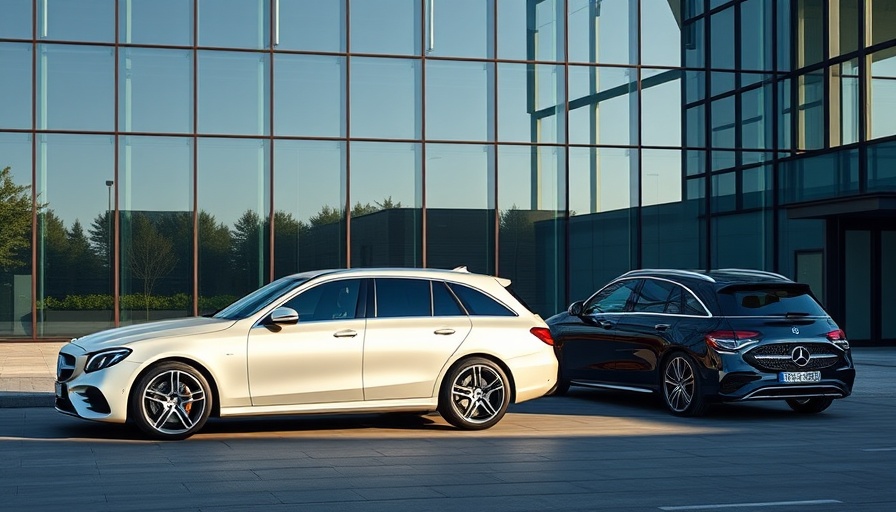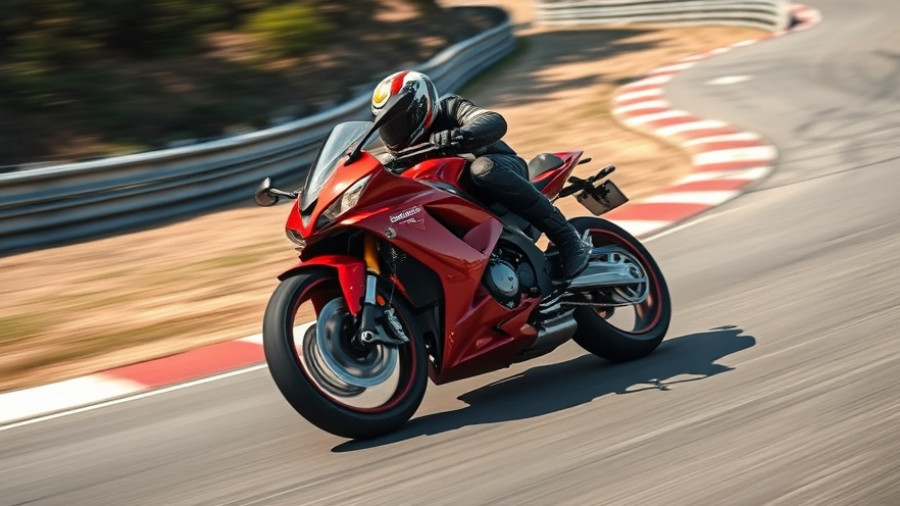
Revolution in the Wagon Segment: The E53 Hybrid Breakthrough
The automotive world has been shaken with the introduction of the 2026 Mercedes AMG E53 Hybrid Wagon, which brings a fresh wave of interest in the wagon segment that many believed to be on the decline. The American debut of Mercedes' latest offering marks a significant shift in the perception of performance vehicles, blending practicality with power at a price point that turns heads.
Comparative Pricing: An Unbeatable Value Proposition
At an entry-level price of $93,350 before destination fees, the E53 hybrid steals the spotlight, coming in significantly lower than its German competitors. The BMW M5 Touring starts at $123,900 and the Audi RS6 Avant is priced at $130,700. For consumers assessing value, the Mercedes proposition becomes not only appealing but a rational choice when performance is considered alongside costs.
Performance Metrics: Not Just a Family Hauler
While the E53 may not outshine its rivals in raw performance figures, with a 0 to 60 mph time of 3.8 seconds compared to BMW's 3.5 and Audi's 3.3 seconds, it comes close enough to blur the lines of competition. A highlight of the E53 is its hybrid technology, which contributes not just to performance gains but also to fuel efficiency and a quieter ride for everyday errands.
The AMG Touch: What Sets the E53 Apart
The heart of the E53 is its turbocharged 3.0-liter inline-six engine paired with a 9-speed automatic transmission and an electric motor. Together, they produce an impressive 577 horsepower and 553 lb-ft of torque, making it a true performance vehicle. Furthermore, the optional AMG Dynamic Plus Package can boost power to 604 horsepower, making the E53 not just practical but ready for track days and spirited drives.
Interior Features: Comfort Meets Cutting-Edge Technology
Mercedes didn’t cut corners on comfort and technology with the E53. Standard features include heated front seats, a 14.4-inch touchscreen, and a luxurious Burmester 4D Surround Sound system. For those opting for the Pinnacle trim, additional features such as a head-up display and gesture controls elevate the driving experience, marking the E53 as a leader in the wagon category.
Market Trends: The Resurgence of Wagons in America
The consumer environment is shifting, with a renewed interest in practical vehicles that do not compromise on performance. The E53’s introduction comes at a time when brands like Mercedes are re-introducing the wagon to meet the growing demand for versatile family vehicles that offer performance flair. This shift could signify a bigger trend, as automotive giants may look to reinvigorate this segment.
Environmental Considerations: Hybrid Technology's Role in the Future
With more buyers leaning toward eco-conscious driving options, the E53's hybrid functionality offers a glimpse into a future where performance and environmental responsibility coexist. The ability to drive up to 41 miles on electric power alone presents an invaluable benefit for urban drivers and families looking to reduce their carbon footprint.
Consumer Insights: Why the E53 Might Be Your Next Purchase
Selecting a performance vehicle often involves trade-offs, yet the E53 strikes a remarkable balance. Family-oriented buyers who previously might have gravitated towards SUVs or crossovers are finding the E53 hybrid wagon an attractive option that does not compromise on speed, technology, or comfort. Its competitive pricing paired with robust features makes it a tempting choice for anyone seeking both practicality and performance.
In conclusion, the 2026 Mercedes AMG E53 Hybrid Wagon presents an impressive offering that not only undercuts competitors in price but also delivers on the promise of performance and practicality. As the wagon segment experiences revitalization, consumers are encouraged to consider the E53 as an exceptional choice that encapsulates efficiency, speed, and comfort all wrapped into one elegant package. Explore your options and don't miss out on the opportunity to experience a new era of automotive excellence.
 Add Row
Add Row  Add
Add 




Write A Comment